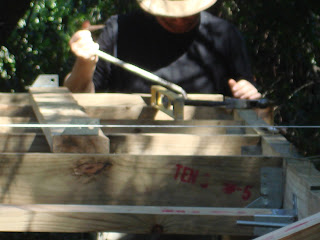(I wrote this piece 7 Years ago today for the Urban Circle Blog - but I can see now how its relevant this site as well)
 Architects are living through fantastic times in this city and South Africa generally. Not only is there an abundance of work, but a heightened awareness of the value that Architects are able to add to the built environment. There is such a lot of “cool” stuff to do, that I am worried that we try to do too much and loose out on the enjoyment of doing one thing well. I believe though that it is better to take action than to worry!
Architects are living through fantastic times in this city and South Africa generally. Not only is there an abundance of work, but a heightened awareness of the value that Architects are able to add to the built environment. There is such a lot of “cool” stuff to do, that I am worried that we try to do too much and loose out on the enjoyment of doing one thing well. I believe though that it is better to take action than to worry! …So I have taken action.
I love beautiful buildings. Big buildings, small buildings. I love being inside them. The light, the sound, the way people use them. The way they sit in the city or landscape. I love the way these buildings are put together.
There is magic in that; and I am starting to reconnect with this magic.. What surprises me is that I have felt that reconnection not in the billion rand, high visibility, world beating projects running through our office, but rather in something a little more modest….
You see,.. my semi- retired father and I are building a wooden cottage in the Outeniqua indigenous forest. It is a very modest cottage built for family needs; rectangular in plan, with a double pitch corrugated iron roof. When I say we are building the house I don’t mean it as a metaphor for designing and drawing plans for, or a metaphor for sitting around watching the contractor’s progress. No; I mean we are physically, digging, measuring, cutting and fitting (and sometimes knocking down)

It has been great on two significant levels. Let me list them:
Firstly:
When physically building you are compelled to focus on one task. You are compelled to be present. Not to think about the next meeting or the previous phone call. How often do we get a chance to be focussed on the present? Especially those of us in management positions can lead a very fragmented and frantic existence. Many of us have powerful and creative minds but have created a reality for ourselves where we spread our input (and out impact) so thin as not to add the value that we could.
Secondly:
Building in the forest has helped me see the potential of my own hands and energy. I can actually build a house. WOW!
The real truth is that Murray and Roberts could probably build it a little neater. (OK,… a lot neater.) But it is not a competition. We are building the house because that is what we need to do to meet our needs and aspirations right now. We are not building the house to try to compete with Murray and Roberts! But what I am talking about here is something more widespread! A phenomenon that spreads across our lives and effectively limits what we believe we are able to do. We are intimidated by the corporate and media dominated world through which we move every day. We slowly begin to believe that we are not good enough to take action.
We cannot sing as well as Mariah Carey, so we will never dare to sing at a family dinner or in the pub.
We cannot tell stories as well as Stephen King, so why even bother trying.
Mom cannot make clothes as neatly as Edgars, so we’ll rather stay at home than be seen dressed in her homemade tracksuits.
We cannot build as well as Murray and Roberts, so lets not let people laugh at our crooked house!
The net result is that we become intimidated into inaction allowing big corporate and media giants to do for us what we used to do for ourselves, and it only takes a little time before we have lost our skills and our dignity forever.
I have in the forest found the joy and freedom of taking back that which I thought I had been robbed of. Cutting planks, laying boards, nailing trusses.
There is magic in that!




























